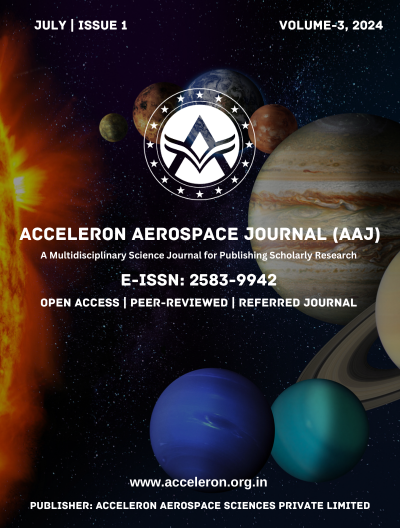Confined Z-Pinch Magnetic Nozzle : A New Approach to Space Propulsion System that Utilizes Trapped Charged Particles
DOI:
https://doi.org/10.61359/11.2106-2431Keywords:
Z-Pinch Plasma Propulsion, Space Propulsion System, Confined Z-Pinch Magnetic NozzleAbstract
This paper provides a theoretical overview of a Z-pinch magnetic nozzle plasma propulsion system designed for Low Earth Orbit (LEO). The system utilizes trapped charged particles from the spacecraft's environment and magnetic confinement to generate thrust, reducing the need for onboard propellants. By employing a magnetic mirror configuration, the plasma is confined and accelerated to create propulsion. The proposed propulsion system is tailored to function in the dynamic space radiation environment of LEO, particularly in polar orbits, accounting for variations in solar activity that affect trapped protons and electrons. The mechanism involves converting magnetic plasma energy into directed kinetic energy, facilitating efficient plasma detachment and momentum transfer to the spacecraft. This study examines the feasibility, design overview, and constraints of implementing this propulsion technology. Key challenges include the variability of the space environment, technological complexities, radiation effects, plasma detachment efficiency, energy requirements, and material durability. Overcoming these challenges through innovative engineering and rigorous testing is essential for successful implementation. The Z-pinch magnetic nozzle plasma propulsion system promises to advance space propulsion technology, offering a more efficient and cost-effective method for satellite operations in LEO. With further research and development, it has the potential to support future satellite missions and space exploration initiatives.
Downloads
Downloads
Published
How to Cite
Issue
Section
Categories
License
Copyright (c) 2024 Acceleron Aerospace Journal

This work is licensed under a Creative Commons Attribution 4.0 International License.
The Acceleron Aerospace Journal, with ISSN 2583-9942, uses the CC BY 4.0 International License. You're free to share and adapt its content, as long as you provide proper attribution to the original work.





